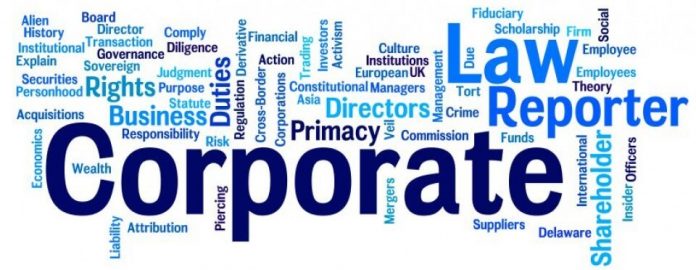This article is written by Sriram Kishan B.R pursuing a Certificate Course in Advanced Commercial Contract Drafting, Negotiation & Dispute Resolution. This article has been edited by Ojuswi (Associate, Lawsikho).
This article has been published by Sneha Mahawar.
Table of Contents
Introduction
A corporation or a company is an association of people who possess an objective of manufacturing, producing, or providing either goods or services for a certain consideration under a common name and seal. And such a corporation requires it to be operated in a certain manner which varies from every country, nature of the business, industry, etc. And one such mode of operating a corporation is in the status of an “S-corporation”.
Commonly in India, an entity may take the form of a sole proprietorship, partnership, private limited company, public limited company, one-person company, limited liability company, or non-profit organization. And each such entity is regulated and bound by respectively applicable provisions of Indian laws, such as the Partnership Act, Companies Act, etc. The concept of an S-corporation doesn’t exist in India presently, where the burden of the tax liability on the income earned during a year by a corporation is passed to its shareholders of such a corporation, where it is taxable under their respective personal income tax returns.
Whereas in the United States of America, the entities may be in the form of a Sole proprietorship, Partnership, C-corporation, and S-corporation. This is a type of corporation where it contains a unique feature of passing the tax liability on the income earned during a financial year to its shareholders proportionately. Henceforth, this type of corporation is also termed a “flow-thru entity. This is a type of status attained by a corporation that is established in the United States of America, after satisfying certain essential requirements. Under such corporations, the liability of payment of taxes on income earned in a given financial year by a corporation is single-point taxation, and comparatively lower than a C-corporation.
Essential requirements for an S-Corporation
Not more than 100 shareholders
An S-corporation shall contain only 100 shareholders, and all such shareholders shall compulsorily be the citizens of the United States of America. And no artificial persons/legal entities can be a shareholder in such an organization. No corporation can hold any stock in a corporation having an “S” status.
Domestic entity
An S-corporation shall always be a company that is incorporated and established within the United States of America and is not applicable for any foreign entities or multi-national companies established on foreign soil. On the contrary, an S-corporation can own or hold stocks in other C-corporation status companies and not vice versa. The benefits are made sure to be available for the domestic entitles alone, to generate a source of revenue for the government.
A unanimous decision by election
To attain the status of an S-corporation, all the shareholders of that corporation shall by mode of the election show their consent to attain so by voting unanimously, since tax liability on the income earned by the company shall be directly passed on to the individual shareholders. Until everyone provides their free consent to accept the tax burden proportionate to the shareholding pattern in the corporation, a corporation cannot attain the S-corporation status.
Furnishing annual information returns via Form 1120S
This type of corporation shall not have any liability of payment of taxes on the income earned but shall have to furnish annual information returns through the Form 1120S for the Internal Revenue System (IRS) department of the United States of America. In this particular Form, the company shall furnish the report of Income and the allocation of that income for various shareholders. Since the same will be reflected on all such individual shareholder’s income tax returns of an S-corporation, such shareholders shall report the same in their returns under Schedule K1, where all the allocated items reported by such corporation under Schedule K in its returns.
Since, such corporations are taxed as per the provisions mentioned under the subchapter S of the Internal Revenue Code (IRC) of the United States of America, hence the classification Form 1120S.
Declaration via Form 2553
Any corporation by default shall inherit the status as a C-corporation in the United States of America as per the Internal revenue Service rules. But if the intending corporation is of the view that they are to attain the status as an S-corporation, as stated earlier, subject to the maximum number of shareholders who shall be real persons only, within a corporation who are compulsorily holding a US citizenship, voting unanimously in the shareholders meeting provide individual consent to meet the income tax liability burden, shall thereafter declare the same via Form 2553 to the Internal Revenue Service (IRS) as prescribed.
This Form is commonly misconceived as an income tax returns declaration form for the corporations but it is in reality an elective Form for the corporations to declare the intention to attain the “S” status for their corporations.
Issue a common stock
A common stock of a single class is issued in such a corporation. This is mainly to avoid any preferences over the other class of shareholders as in the case of C-corporation. This ensures all the shareholders are of equal voting rights proportionate to their shareholding pattern, but never any rights overpowering the others to maintain uniformity in the corporate decision. Since the tax liability is directly passed on proportionately to its shareholders, the decisions too shall be of utmost importance for the sustainability of the S-corporation status.
Termination of S-corporation status
An S-corporation can terminate its attained status either by way of voluntary or due to ineligibility or by the failure of passive income test or by selective date mode. A voluntary mode is where the shareholders hold a meeting and by way of attaining majority votes of the shareholders decide to opt out or terminate the attained “S” status. The ineligibility mode is where the maximum number of members i.e., 100, exceeds in a corporation, or stops being a US citizen or sold to a non-US citizen/ corporation or when preferred stock is issued. A passive income test is where such a corporation shall attain a minimum of 25% of its total income earned from a passive income source, consecutively for a period of 3 years.
Once an S-corporation status is terminated or revoked, the re-election of the “S” status cannot be made for five years from such date of termination or revocation, unless and until the Internal Revenue Service (IRS) consents to such early re-election.
Comparison with a C-Corporation
A C-corporation is a regular corporation where the liability of the payment of tax on the income earned by the company is or cannot be passed on to its shareholders. But it is the company’s liability on the income earned in any given financial year as applicable with prevailing tax rates. A C-corporation shall file its tax returns with the IRS under Form 1120, while the S-corporation shall file returns under Form 1120S.
While tax liability under the C-corporation is a double taxation item, where after the payment of tax by the corporation upon the income earned during a financial year, when the dividends are transferred proportionately to its shareholders, they are again taxable to the shareholders under their personal income tax returns. On the contrary, under a C-corporation, the same is a single taxable item, where the total income is not taxable and hence it is passed on to its shareholders directly as dividends.
The C-corporation is a default status acquired by any company under the rules of the Internal Revenue Service in the United States of America. But the status of an S-Corporation is a status voluntarily and unanimously elected via voting among the shareholders of a corporation and thereafter declaring the same through the election Form 2553 to the Internal Revenue Service procedures to avail the tax and other advantages.
Under the C-corporation any number of shareholders may exist since there is no maximum ceiling limit. While the shareholders are limited to one hundred members in an S-corporation.
The ownership of a C-corporation is not restricted to individual persons with US citizens, since anyone including a non-US citizenship person can also own such a corporation’s shares. Any corporation and legal persons including an S-corporation can own the stocks of a C-corporation. Whereas, the shares of an S-corporation are limited to US citizenship holders only. And further, the shares are limited only to real persons, and no artificial or legal persons or entities can hold such shares.
Differences between S-Corporation and C-Corporation
| Sl. | S-Corporation | C-Corporation |
|---|---|---|
| 1 | Passing income tax liability to its shareholders | Cannot pass income tax liability to its shareholders |
| 2 | Declare income tax returns via Form 1120S | Declare income tax returns via Form 1120 |
| 3 | A single-point taxation system | A double-point taxation system |
| 4 | Status acquired by-election by every shareholder’s consent of the corporation via Form 2553 | Status acquired as default after incorporation of a company |
| 5 | Only 100 shareholders holding USA citizenship | No maximum limit of shareholders and anyone can own the stock |
| 6 | Can own a C-corporation stock | Cannot own an S-Corporation stock |
Conclusion
Despite the status of the corporation is holding either by default or by the voluntary election of status to enjoy all the benefits of tax and every other advantage that accompanies the status of the organization is ultimately passed on to the real owners of a corporation i.e., the shareholders. The nature of trade or business or profession or services as the case may be is very diverse for each corporation from the other. Hence, the shareholders after careful consideration and in consultation with professionals shall opt their way as they see fit to operate their corporation with the vision and objective they intend to achieve.
References
- https://www.dlapiperaccelerate.com/knowledge/2017/s-corporation-basics.html
- https://www.irs.gov/forms-pubs/about-form-1120-s
- https://www.irs.gov/forms-pubs/about-form-2553
- https://www.wolterskluwer.com/en/expert-insights/s-corporation-advantages-and-disavantages
Students of Lawsikho courses regularly produce writing assignments and work on practical exercises as a part of their coursework and develop themselves in real-life practical skills.
LawSikho has created a telegram group for exchanging legal knowledge, referrals, and various opportunities. You can click on this link and join:
Follow us on Instagram and subscribe to our YouTube channel for more amazing legal content.
 Serato DJ Crack 2025Serato DJ PRO Crack
Serato DJ Crack 2025Serato DJ PRO Crack











 Allow notifications
Allow notifications


